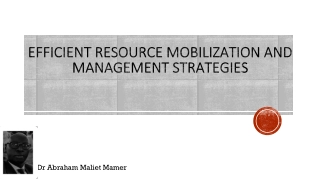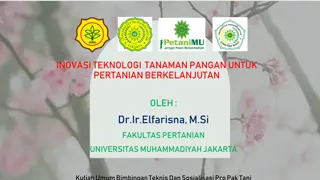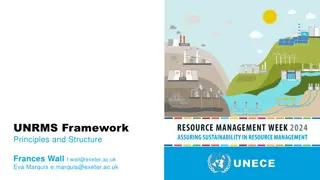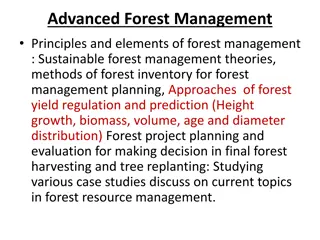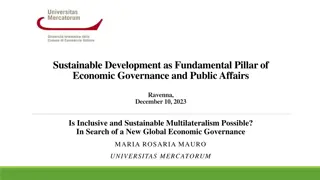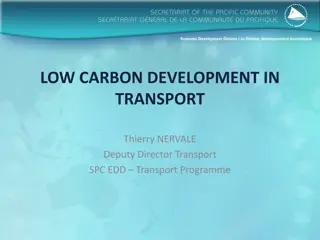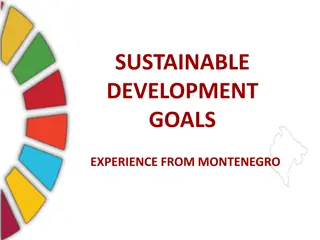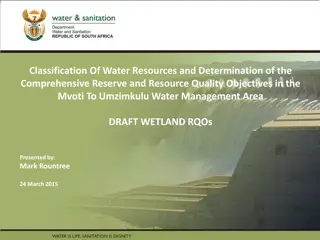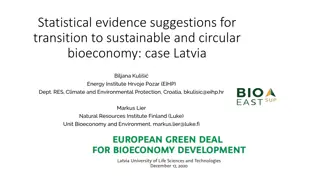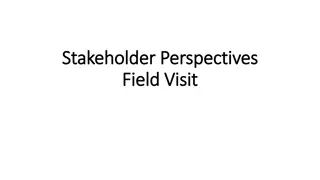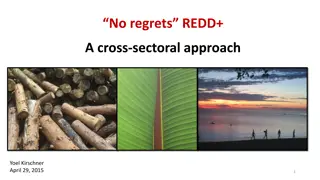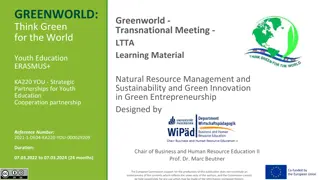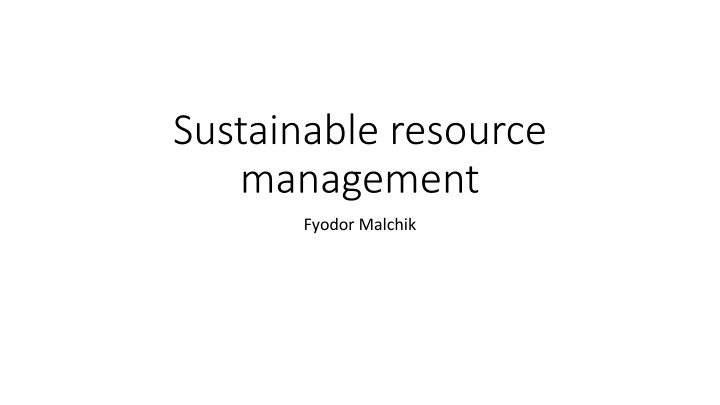
Sustainable resource Management
This content delves into Sustainable Supply Chain Management (SSCM) and its importance in integrating economic, social, and environmental sustainability into supply chains. It covers key challenges, benefits, and strategies for implementing SSCM. Explore how corporations address economic goals while focusing on social and environmental issues in global supply chains.
Download Presentation

Please find below an Image/Link to download the presentation.
The content on the website is provided AS IS for your information and personal use only. It may not be sold, licensed, or shared on other websites without obtaining consent from the author. If you encounter any issues during the download, it is possible that the publisher has removed the file from their server.
You are allowed to download the files provided on this website for personal or commercial use, subject to the condition that they are used lawfully. All files are the property of their respective owners.
The content on the website is provided AS IS for your information and personal use only. It may not be sold, licensed, or shared on other websites without obtaining consent from the author.
E N D
Presentation Transcript
Sustainable resource management Fyodor Malchik
Approach to Sustainable Supply Chain Management (SSCM): Overarching Framework Preparing for Implementation Framing the Issues Assessing Impact Session 4: Sustainable Supply Chains as a Lever of Competitive Advantage Session 1: From Sustainable Development to Sustainable Supply Chains Session 5: Integrating Sustainability into the Supply Chain Session 8:Measuring and Communicating on Sustainable Supply Chain Performance Session 2: Governance of Supply Chains: From Compliance to Voluntary Standards Session 6: Managing Stakeholder Relations Session 7: Building Supply Chain Partnerships Session 3: Governance of Supply Chains: Introducing International Labour Standards 2
Session Objectives Analyse the relationship between SSCM and competitive strategy; Discuss steps for integrating sustainability into the SC; and Highlight key benefits and challenges. 3
Session Outline Unit 5.1: Introduction. Unit 5.2: Analysing SSCM and Competitive Advantage. Unit 5.3: Integrating Sustainability into the SC. Unit 5.4: Benefits and Challenges for Integrating Sustainability into the SC. Unit 5.5: Conclusion 4
Unit 5.1: Introduction Question What are the key social and environmental challenges that corporations are called upon to integrate when seeking to achieve their economic supply chain goals? 5
Sustainability concerns in Global SCs Economic goals in SCs: Cost, quality, speed of delivery, flexibility, resource utilization, visibility and innovativeness (Chan, 2003; and Gunasekaran et al, 2001). Social issues: respect of human and workers rights child labour, bonded labour, health and safety, working conditions (Maignan et al, 2002); gender equality, poverty alleviation, etc. Environmental problems: pollution, climate change; decline in ecosystems & biodiversity; deforestation; soil degradation; resource depletion and fresh water crisis (McAllister et al, 2005). 6
Question How many people think it is difficult to simultaneously integrate economic, social and environmental sustainability issues into the supply chain? 7
Video: What do Business Leaders Think About Supply Chain Sustainability? Future Supply Chain 2016 CEOs of consumer and retail products highlight Sustainable Supply Chain concerns: challenges, breakthroughs, innovations, collaboration and momentum. http://www.youtube.com/watch?v=US5lO1HfmEo 8
Unit 5.2: Analysing SSCM & Competitive Advantage To achieve competitive advantage, resources and/ or capabilities generated through SSCM must be: Valuable: respond to threats and opportunities. Rare: Controlled by a few competing firms. Imitate: Costly for rivals to reproduce. Organisation s policies and procedures should support exploitation of the above three. (Barney, 2007) 9
The VRIO Framework(Barney, 2007, pp. 150) Is a resource or capability resulting from SSCM Exploited by Organization? Competitive Implications Costly to Imitate? Rare? Valuable? No No Competitive Disadvantage Competitive Parity Yes No Temporary Competitive Advantage Yes Yes No Sustained Competitive Advantage Yes Yes Yes Yes 10
Unit 5.3: Integrating Sustainability into the SC All levels in the SC Raw material sourcing. Manufacturing. Packaging. Warehousing. Logistics (Transportation & distribution). Retail. Consumption. 11
Integrate Sustainability into SC processes Product design. Manufacturing by-products. By-products produced during product use. Product life extension. Product end-of-life. Recovery processes at end-of-life. (Linton et al, 2007) 12
Businesses employ various strategies to integrate sustainability into the SC. Reactive Defensive Accommodative Proactive (Maignan et al, 2002) 13



